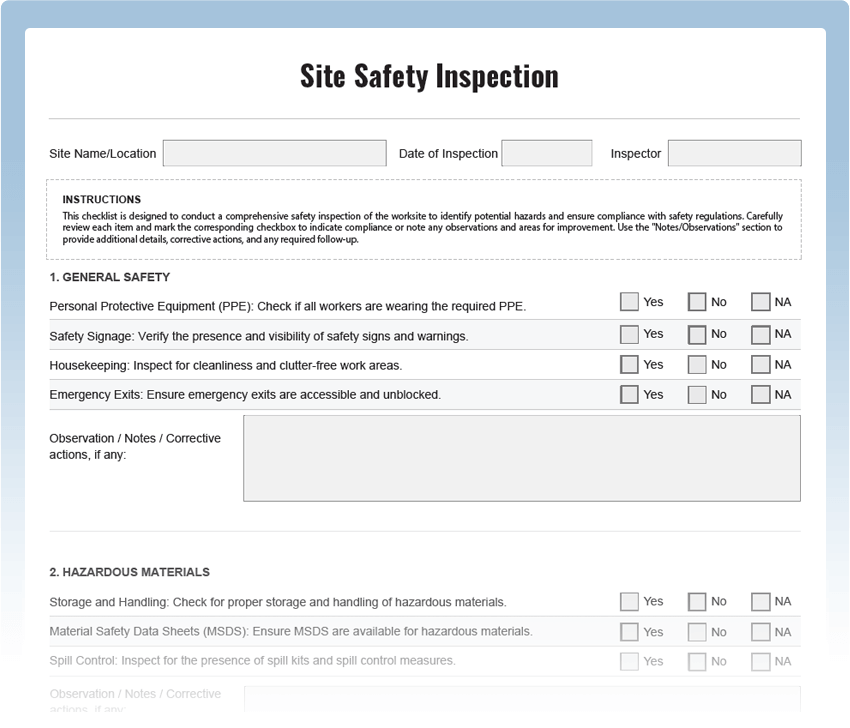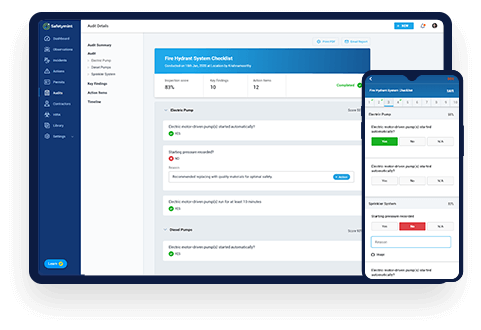Site Safety Inspection Checklist
Promote a culture of safety and ensure compliance with our comprehensive Site Safety Inspection Checklist. This free PDF template covers all critical aspects of site safety, hazard identification, and risk mitigation, empowering you to maintain a secure work environment for all workers and visitors.
Digitize this Checklist on Safetymint
- Create unlimited, customized checklists
- Add Actions, with automated reminders
- Works seamlessly with or without internet
- Access via web browsers, mobile or tablets

What is a Site Safety Inspection Checklist?
A Site Safety Inspection Checklist is a systematic tool used to evaluate the safety conditions of a workplace or construction site. It includes a series of checkpoints designed to assess potential hazards and identify safety gaps that may pose risks to personnel or property. Regular site safety inspections are vital for preventing accidents, meeting regulatory requirements, and fostering a safety-first culture.
Key Areas to Inspect on the Site:
- Personal Protective Equipment (PPE): Verify that all workers have and use appropriate PPE for their tasks.
- Housekeeping: Assess the overall cleanliness and organization of the site to prevent slips, trips, and falls.
- Fall Protection: Check for the presence and proper use of fall protection systems for work at heights.
- Scaffolding and Ladders: Inspect the stability and proper assembly of scaffolding and ladders.
- Electrical Safety: Verify that electrical systems and equipment are in safe working condition.
- Material Handling: Assess the safe handling and storage of materials to prevent injuries.
- Emergency Preparedness: Evaluate emergency response plans and the accessibility of emergency equipment.
Common Site Safety Inspection Findings:
Frequent issues found during site safety inspections include:
- Missing PPE: Workers not using appropriate personal protective equipment for their tasks.
- Tripping Hazards: Cluttered or poorly maintained work areas causing slips and trips.
- Lack of Guardrails: Absence of proper fall protection, leading to potential fall hazards.
- Unsafe Electrical Practices: Unsafe wiring or improper use of electrical equipment.
- Inadequate Signage: Absence of warning signs and safety markings.
Site Safety Inspection Best Practices:
- Regular Inspections: Conduct routine site safety inspections, especially before critical tasks or new work phases.
- Corrective Actions: Address any identified safety deficiencies promptly and follow up on corrective measures.
- Training and Education: Provide comprehensive safety training to all workers.
- Safety Meetings: Hold regular safety meetings to discuss safety concerns and best practices.
- Safety Culture: Encourage a safety-first culture where workers actively participate in safety initiatives.




